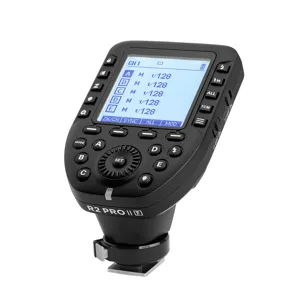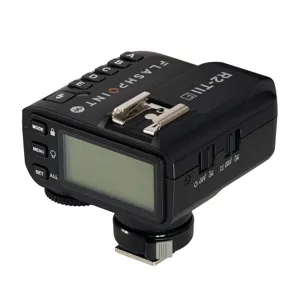Hi Everyone,
I've been shooting for many years but only recently have been taking my work to higher levels. Both with film and digital.
I have always had a knack, and interest, in product photography and now, a artist/friend has asked if I would have the ability to shoot all of his paintings for him so he can get it up online in a professional setting. Other than a couple of books coming in from the library, I am stumped at my next move.
There are lots of online tutorials on youtube on product photograpy. I will try to look up some and post links to them here.
I often find courses on Udemy are good, too, and very structured in their approach. I don't know if they have one on product or artwork photography in particular, but you should look in to it.
I shoot a Fuji X-H1 with mainly a XF16-55mm F2.8. That may change for the type of shooting I'm doing.
I am pretty sure that your camera is more than fine for (home) studio based artwork or product photography.
I don't own any kind of lighting setup so I feel that I'm at a good place as I'm not locked into anything.
My question is, if you were starting this journey, not knowing if it would take you to bigger things, what basic lighting setup would you purchase for photographing art and other potential products?
From my bit of research on this, I've thought maybe continuous diffused light would be good. Maybe 3 or 4 LED panels with a diffusion insert?
As someone who owns several flash guns, a few LED panels, and several LED chip-on-board (COB) lights, I would say no, I wouldn't start with LED panels.
I would start with flash guns instead, reflectors, a decent sturdy tripod, some foam board (both black and white) and a wireless remote

Since this is still a hobby for me, my budget is limited. Maybe $500?
Also, I have no problem with used equipment. This doesn't have to be new. And probably shouldn't be since I'm testing the waters.
Any suggestions are deeply appreciated.
This is the part where I am supposed to snarkingly say that $500 might get you a "usable" tripod... and nothing else

Anyway, here are the things you will need as a basic setup.
1) A decent tripod. It should be sturdy. I prefer ball heads. Others like three-way pan / tilt heads. You can find used heavy aluminum tripods for under $100. Because they weigh a lot and the cost of shipping is high, you might be able to find something on craigslist. I would NOT buy this exact one on ebay (because shipping is high and it seems to be missing the quick release plates), but this MODEL or a similar model would work (I own one myself):
2) At least one and I would suggest two medium-duty light stands. I am sure others may have good suggestions. I have a couple of Photoflex LS-2214 light stands that I have used since about 1993. They will work with pretty much anything you can currently AFFORD to put on them.
There is an ebay listing where apparently they have two of them available at $60 each, and it says free shipping!?!?!?!?
Again, Craigslist might be worth your while.
3) Sandbags. You don't actually put sand in them. People DIY these (like using ankle weights).
4) Optional, but I am a BIG FAN of a wireless remote for triggering the camera. Why? Because I often take several shots and then blend them in photoshop. For products, I often do focus stacking. Or if you only have one flash, you can take a shot with the flash in one position, then take a shot with the flash in another position to "simulate" a second flash, and then blend them in photoshop. While I would strongly encourage you to buy AT LEAST two strobes, with a $500 budget, you might be stretching things a bit...
Anyway, this is a wireless remote that I use all the time:
The one I linked to implies that it can be used with Fuji cameras, but I would double check that.
5) Miscellaneous stuff: As mentioned above, using a polarized gel over your lights and using a polarize on your lens might be an optimal way to photograph artwork. (I wonder if this might be good for photographing reflective products too???) You will probably want / need various reflectors. A lot of people use white foam board (artists board???)
OK, now to the fun / painful decisions; Lights and modifiers.
You will need to make a decision as to whether you will be shooting on a location with electrical outlets, or whether you will need (or want) battery powered lights, either because there is no electricity available or because it is more convenient to use battery powered lights.
Also, you will want something that is durable (to a point), and can be a part of an expanding kit of gear (if you want to add more lights / swap out lights in the future).
Two of the more "bargain" brands of lights that I know of are Godox and Paul C. Buff (at least here in the USA)
I am going to let others chime in about which AC powered strobes to get since I am only really familiar with battery powered strobes. Possibly you can find a deal on a light plus stand combo that will save you a few dollars.
And then you will need modifiers: There are tons of different modifiers out there. You can start with some decent shoot-through white umbrellas. It can be important that the umbrellas don't change the color of the light too much. In general, the bigger the modifier, the softer (and more even) the light.
OK, here is a basic two light kit with white reflective umbrellas. I have no idea if it is a good kit, or whether it is a bad kit. And I also have no idea how you would gel the lights, so this probably WON'T work for your needs?!?!?! Hopefully someone else can weigh in on this:
Flashpoint BLAZ 300 R2 Studio 2-Monolight Kit, Bundle with 2x Glow 40" White Umbrellas, 2x Pro Air Cushioned Light Stands, Snoot Kit and Godox 28.3" Carrying Bag

www.adorama.com
Anyway, if you went with a kit like that, you will also need a transmitter to go in the hotshoe of your camera..
Something like this:
Flashpoint R2 Pro MarkII 2.4GHz Transmitter for Fujifilm

www.adorama.com
or like this:
Flashpoint R2 Mark II TTL Transmitter for Fuji Cameras

www.adorama.com
Anyway, the above is all food-for-thought (as opposed to hard recommendations). Hopefully others will chime in with better suggestions than mine.





























